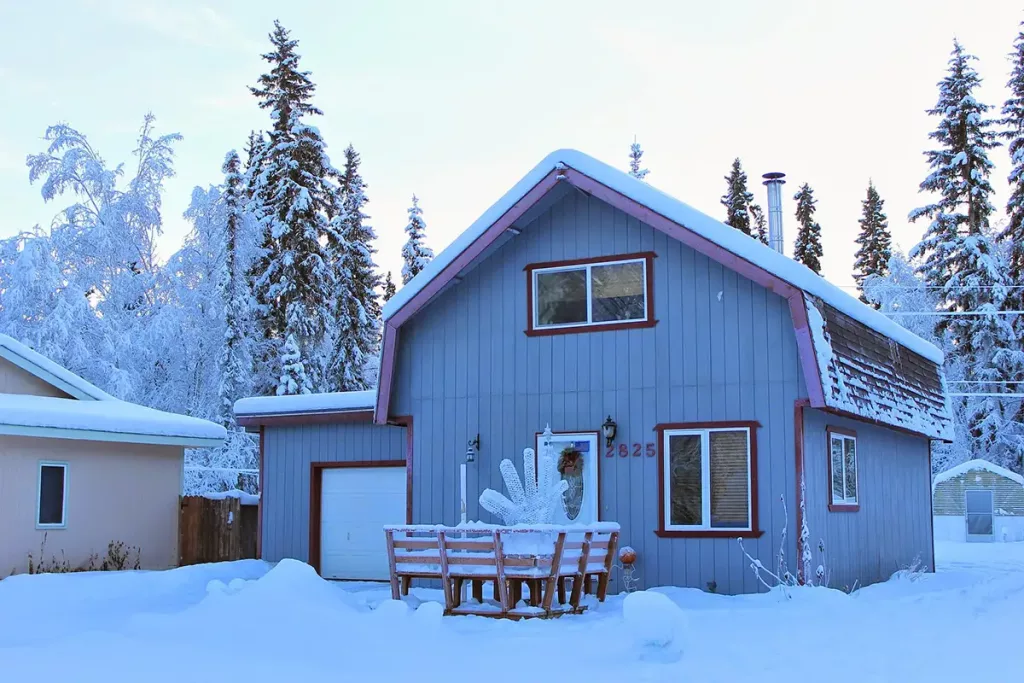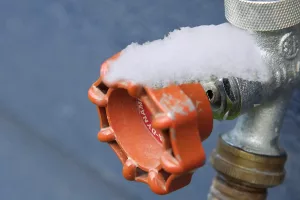
As winter approaches, it’s time to winterize your house, to fortify it against the chilly winds and freezing temperatures. A wintereized home not only ensures your comfort but also saves energy and prevents potential damages. In this comprehensive guide, we’ll take you through an extensive checklist, covering everything from insulating pipes to creating a winter emergency kit.
How to winterize a house – Step-by-step guide
1. Insulate Exposed Pipes
One of the primary concerns during winter is the risk of frozen pipes. To safeguard against this, wrap exposed pipes with insulation. Consider using pipe sleeves or heat tape for an extra layer of protection. This simple step can prevent the nightmare of burst pipes and costly repairs.
2. Seal Gaps and Cracks
A drafty home can significantly impact your heating costs. Take the time to inspect windows, doors, and walls for any gaps or cracks. Weatherstripping and caulk are your allies in sealing these openings. Not only do they keep the cold air out, but they also enhance your home’s energy efficiency.
3. Clean Gutters and Downspouts
Gutters laden with leaves and debris can lead to ice dams, causing water damage. Clear your gutters and ensure downspouts direct water away from the foundation. This not only protects your home but also maintains the integrity of your roof and prevents potential leaks.
4. Inspect and Maintain Heating Systems
A well-functioning heating system is crucial for a cozy winter and one of the most important parts of a winterized house. Schedule a professional inspection to ensure your furnace or heating system is in optimal condition. Replace filters regularly and check that your thermostat is working accurately. These measures not only keep you warm but also contribute to energy efficiency.
5. Protect Outdoor Faucets and Hoses

Outdoor faucets are vulnerable to freezing, leading to plumbing issues. To protect outdoor faucets and hoses during winterization, start by disconnecting and draining hoses, storing them in a sheltered area. Consider installing frost-free hose bibs or using insulated covers like faucet socks or Styrofoam covers. Alternatively, wrap towels or rags securely around faucets. Close shut-off valves, use hose bibb locks, and insulate exposed pipes with sleeves or heat tape. Regularly check for leaks and perform seasonal checks to ensure all protective measures are in place. This proactive approach prevents freezing, ice buildup, and potential damage, ensuring your plumbing remains in optimal condition.
6. Seal Windows with Plastic Film
Windows are a significant source of heat loss. Apply plastic film to create an additional barrier against drafts. Consider investing in thermal curtains for added insulation. These measures not only keep your home warmer but also contribute to energy savings.
7. Check Insulation in Attic and Walls
Proper insulation is key to retaining heat. Verify that your attic and walls are adequately insulated. If needed, add insulation to ensure your home remains comfortably warm and energy-efficient throughout the winter months.
8. Prepare Your Fireplace
If you have a fireplace, make sure it’s ready for use. Schedule a chimney inspection and cleaning. Stock up on firewood and ensure the damper is functioning correctly. A well-maintained fireplace adds both warmth and ambiance to your home.
9. Service Your Generator
A generator can be a lifesaver during winter power outages. Ensure it’s in good working order by scheduling regular maintenance. Keep an adequate supply of fuel and test the generator periodically to avoid last-minute surprises.
10. Winterize Your Lawn and Garden
Don’t forget the exterior of your home. Trim tree branches that could pose a risk during winter storms. Store outdoor furniture and cover delicate plants to protect them from the cold. This not only preserves your landscaping but also prevents potential hazards.
11. Test Smoke and Carbon Monoxide Detectors
Safety is paramount during the winter months. Replace batteries in smoke and carbon monoxide detectors. Test each unit to ensure they are functioning correctly. This small but crucial step can be a lifesaver in emergency situations.
12. Prepare an Emergency Kit
Finally, assemble a winter emergency kit. Include essentials such as blankets, flashlights, non-perishable food, and first aid supplies. Being prepared for unforeseen circumstances ensures that you and your family stay safe and comfortable.
Conclusion
Winterizing a house is an investment in both comfort and peace of mind. By following this comprehensive guide, you’ll not only stay warm and cozy but also contribute to energy savings and the longevity of your property. Embrace the winter season fully prepared, and enjoy the beauty of the season without worrying about potential home-related issues. Stay warm
[…] How To Winterize A House – The Ultimate Guide […]